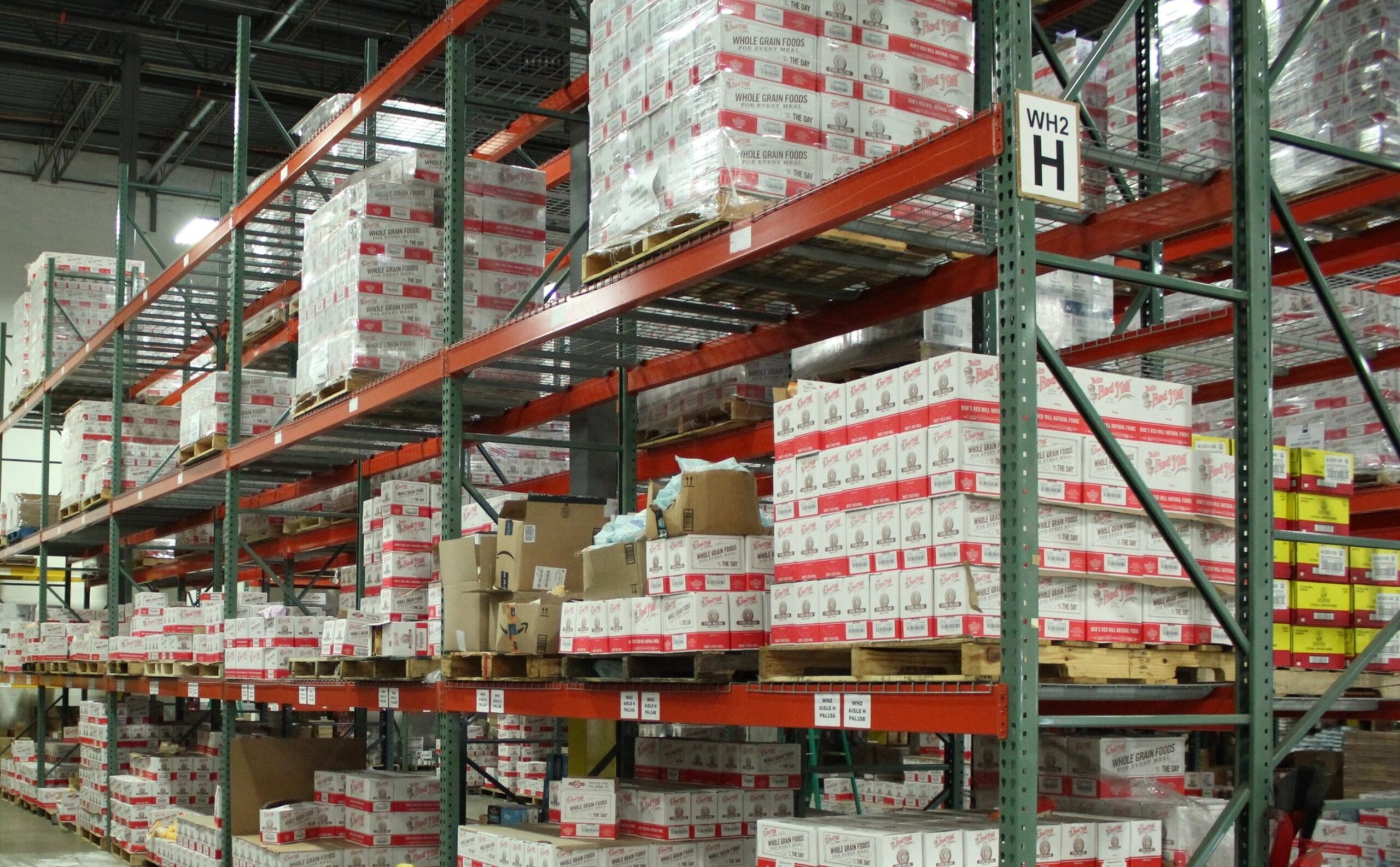Contents

To sustain and support a growing e-commerce business, you need a way to maintain a lean supply chain while meeting customer expectations around shipping times and costs.
Your supply chain needs to be as efficient as possible and not eat into your profit margins more than necessary. As an e-commerce business, you need to be able to measure data supply chain data effectively, which is where supply chain analytics comes in.
In order to optimize and efficiently manage your supply chain, you need to be able to clearly visualize where improvements can be made. There are a lot of tools and technological resources available to access advanced data and analytics, providing better visibility into your supply chain and helping you to make informed business decisions.
What Are Supply Chain Analytics?
A vital component of supply chain management (SCM), supply chain analytics includes the processes used to gain insight into logistics performance of a business, from procuring products to inventory management to order fulfillment. Supply chain analytics is the collection and visualization of large amounts of data with the intent of using this to optimize the supply chain.
With supply chain analytics, you can collect a wide range of data in real time, using technology, tools, and additional resources to better manage your supply chain to cut costs, improve accuracy, and increase operational efficiency. Supply chain analytics collects data across a variety of platforms to show you information about all aspects of the supply chain, from the flow of inventory to your shipping performance and order fulfillment.
How Supply Chain Analytics Can Help Your Business
Supply chain analytics can be used for a variety of purposes, helping to provide you with end-to-end supply chain visibility and better information to support smart business decisions. There are a variety of benefits to supply chain analytics for your business, including helping to optimize and lower risks in your supply chain and aid with predicting future demand.
Optimize Your Supply Chain
Using data collected through supply chain analytics, you can optimize the processes in your supply chain and correct any potential inefficiencies. Your supply chain runs from produce procurement and warehouse receiving all the way through to shipping and order fulfillment. With better visibility into all of the processes involved, you can quickly make changes to improve your operations when needed.
Lower Potential Risks in Your Supply Chain
Data analytics and visibility into how your supply chain is running can help you to reduce risks by spotting patterns and enabling more efficient supply chain planning. This can be used in a variety of ways throughout the supply chain.
If you notice that production lead times have increased, for instance, this can impact the amount of time it takes to receive inventory and fulfill orders. Using supply chain analytics, you can spot shifts in production lead times and make necessary changes, such as switching suppliers or adjusting your lead times to compensate.
Help With Demand Forecasting
With supply chain analytics, you can gather historical inventory and order data to help predict future trends. With demand forecasting, you can avoid stockouts or holding too much inventory in stock at a time — both of which can cost you money.
Data analytics can allow you to track your inventory in real time. As a result, you will have a better understanding of what you have on hand and when it is time to scale up or down.
Supply Chain Analytics Solutions
Supply chain analytics solutions include supply chain software that can help to centralize and integrate data from various sources and steps in your supply chain, including third parties. Supply chain software can often offer customizable reporting tools and the ability to clearly visualize your data for interpretation in multiple ways, such as in a centralized single dashboard.
With a supply chain analytics solution, you can gain insights into the following:
- Product allocation
- Inventory and demand forecasting
- Logistics costs
- Order accuracy rates
- Fulfillment performance
Types of Supply Chain Analytics
There are a variety of different types of supply chain analytics that can offer you accuracy and insight into data in real time. Some of the most common types of supply chain analytics for e-commerce businesses include predictive analytics, descriptive analytics, prescriptive analytics, diagnostic analytics, and cognitive analytics.
Predictive Analytics
Predictive analytics allows for a more agile supply chain, using machine learning, statistical algorithms, and historical data to prepare for and predict trends. With predictive analytics, you are able to be more proactive through identifying potential disruptions or changes within your supply chain.
Tools offering predictive analytics often allow you to set automatic reorder points or reminders to keep your inventory levels at the proper level. Historical inventory data is analyzed to determine this pre-set reorder time, which is an example of predictive analytics.
Descriptive Analytics
Descriptive analytics explains what has happened. Using historical data to recognize patterns, descriptive analytics are statistical measures that help to spot trends and measure your return on investment (ROI).
Descriptive analytics look closely at historical order data to pinpoint best-selling and slow-moving products, so you can make inventory adjustments. You may decide to discontinue a slow-moving product, for instance, and increase your on-hand inventory of products in high demand.
Prescriptive Analytics
With prescriptive analytics, you can get answers on what to do next. Prescriptive analytics takes vast amounts of data and uses the information to help you make informed and strategic business decisions. Using embedded decision logic or automated processes, prescriptive analytics can help you land on ideal decisions to best support your business.
For example, with prescriptive analytics you can make more informed decisions on when to launch a new product, better shipping strategies, or when it might be ideal to outsource order fulfillment to a 3PL (third-party logistics) provider.
Diagnostic Analytics
Diagnostic analytics helps determine why things might not be working as they should or why something happened. Using diagnostic analytics, you can determine why issues like shipping delays or procurement disruptions are happening.
Diagnostic analytics identifies why mistakes or delays are occurring and gives you the opportunity to correct them at the source.
Cognitive Analytics
Using machine learning and AI (artificial intelligence), cognitive analytics processes vast amounts of data to make human-like decisions, speeding up the decision-making process. This enables better integration and a higher level of visibility across networks, allowing e-commerce businesses the ability to streamline and expand the supply chain with more efficiency.
Data Used in Supply Chain Analytics
Any data that directly relates to inbound and outbound logistics performance at any point in the supply chain is used in supply chain analytics. Data and insights can be gathered from internal sources as well as external applications, such as third-party providers and their performance, and also data related to multiple sales channels and distribution centers.
Data used in supply chain analytics can include the following:
- Rates of inventory turnover
- Warehouse receiving turnaround times
- Average fulfillment costs
- Order accuracy rates
- On-time shipments
- Supplier, carrier, and 3PL performance
Supply Chain Analytics Best Practices
To best benefit from supply chain analytics, there are several tips to consider. You will need to ensure that your technology stack integrates all of the data, for example, and uses the right tools to visualize the data. It is also important to effectively manage your inventory and forecast demand, gather data from social media, use location-specific insights, and use predictive route planning.
Many ERP and SCM software solutions have some supply chain management tools built in. It can also be beneficial to outsource supply chain management to a third-party provider, freeing you up to focus on other aspects of your e-commerce business.
Connect Your Technology Stack
Supply chain analytics pulls data from a variety of sources, and it is important to be able to visualize your entire supply chain to get the full picture of how it is performing. Your data sources (which can include information from your manufacturers, warehouses, stores, inventory management software, fulfillment operations, and third-party providers) all need to be integrated.
Implement Tools to Visualize Your Data
It is important to be able to clearly visualize your supply chain data to best interpret the data. You will want to spend more time making necessary changes and improvements than you do analyzing data and easy-to-read tables and charts, often in a centralized single dashboard.
Manage Inventory & Forecast Demand
Use supply chain analytics to better manage your inventory and forecast demand based on historical order data. You can set automatic reorder points and quantities as well as determine methods to optimize your inventory levels.
Use Location-Specific Insights
Splitting your inventory across multiple fulfillment and distribution centers can allow you to provide faster and more cost-effective shipping options to your customers. Using insights on how particular locations are performing can help you to come up with specific solutions to potential geographical issues.
Gather Data from Social Media
Customer reviews, discussions, and comments on social media can provide you with qualitative and supplemental data that can help you find ways to optimize your supply chain and further strengthen your e-commerce strategy. This data can help you to predict when sales might increase due to a holiday or hot item, for example.
Use Predictive Route Planning
You can speed up your processes, reduce shipping costs, and optimize order fulfillment using route planning software as part of your supply chain analytics and management solution. This allows you to account for and avoid potential shipping delays.
Look Closely at What Your Enterprise Resource Planning (ERP) or SCM (Supply Chain Management) Software Offers
Both ERP and SCM software and technologies have supply chain analytics already built in. Be sure to check into what your current software has to offer before purchasing separate supply chain analytics solutions separately. You will need to decide if your ERP or SCM software offers the tools that you need for optimal visualization of your entire supply chain for ideal optimization.
Consider Outsourcing Fulfillment
Managing and analyzing your e-commerce supply chain can often be handled through outsourcing. An outsourced supply chain can leave order fulfillment and logistics in the hands of experts, such as 3PL providers. A 3PL provider can offer visibility into your operations while saving you time on inventory management and order fulfillment.
References
Transforming the Supply Chain With Data Analytics and Intelligence. (March 2022). Forbes.
Learn more about Manufacturing
Logistipedia is where you can learn more about Manufacturing.




